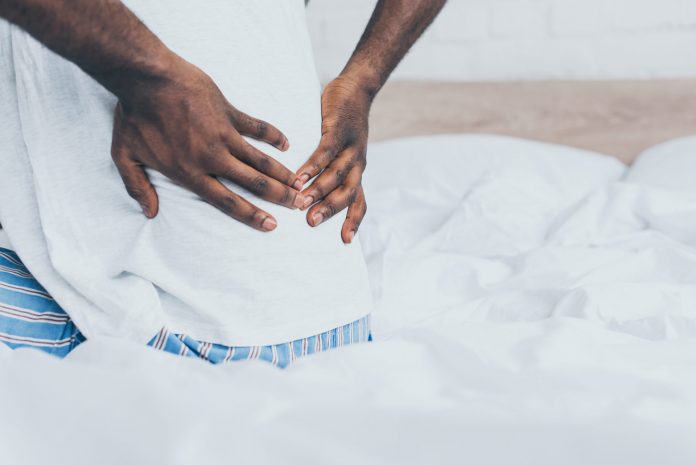Mindfulness: You control the pain
At first glance it’s hard to see the connection between one’s mood and the lower back. The two are connected, but which comes first? It’s a two-way street, according to Mayo Clinic. Depression can result in back pain, and back pain can lead to depression. What’s worse is that the two begin to battle it out. Low back pain can worsen symptoms of depression and the resulting depression then worsens LBP.
Researchers at Sydney University studied clinical trials of almost 23,000 people who were diagnosed with clinical depression. Their study, which was published in Arthritis Care and Research, suggests that people who suffer from depression have a much greater chance of developing LBP in their lifetime in comparison to those without depression. Moreover, the more severe the depression, the greater the risk. Earlier studies had similar findings.
Although the link is clear, the cause is not. However, if you line up the symptoms of chronic LBP and depression, the similarities become more apparent. In both conditions, sleep and concentration are impaired; people withdraw from regular activities; physical activity and exercise are not common. This is further evidence that the chemical pathways in the brain that impact depression control chronic pain as well.
Time is a factor. “If you are depressed for a length of time, it can show up in your body,” explained Diana Freeland, a licensed clinical social worker at The Menninger Clinic.
It’s a tricky situation when the chronic LBP comes first. The focus is so much on the pain, that the symptoms of depression can go undetected, both by the doctor as well as the patient. But major depression is thought to be four times greater in people with chronic back pain than in the general population.
Poorly treated or untreated depression has been shown to worsen LBP if it continues to go unrecognized. For better outcomes both conditions need to be treated at the same time.
Treating clinically depressed people with chronic LBP is a challenge, particularly in light of the opioid epidemic. Doctors are encouraged to look at alternative therapies for treatment of pain. Two such therapies are cognitive behavioral therapy and mindfulness.
CBT, a type of talk therapy, helps a person become aware of inaccurate or negative thinking so he or she can view challenging situations more clearly and respond to them in a more effective way. “It’s based on the premise that the way you think affects the way you feel,” explained Freeland.
Another technique, mindfulness, is a mental state that is achieved by focusing on one’s awareness in the present moment. It involves acknowledging and accepting everything around you, including your feelings, thoughts and bodily sensations. “It makes you be aware of what’s going on around you and not only on the pain,” said Freeland.
For instance, a person will be asked to tell everything that he or she is experiencing at the moment. In mindfulness, one acknowledges the pain, but then focuses on other things—the feel of the chair, a sound, a smell, your breathing. The purpose is to shift awareness to other things going on—and not just the pain.
These two techniques are gaining in favor as effective therapeutic tools. A recent study published in JAMA found that among adults with chronic LBP, treatment with mindfulness or cognitive behavioral therapy resulted in greater improvement in back pain and functional limitations than did usual care, such as medications or exercises. The improvements persisted for a whole year.
For some people with depression and chronic LBP pain, mindfulness is an appealing pain management option because it puts the person in control. Unlike pain medications or medical procedures, meditation is not done to you. It is something you can do for yourself.
From Bay State Banner





